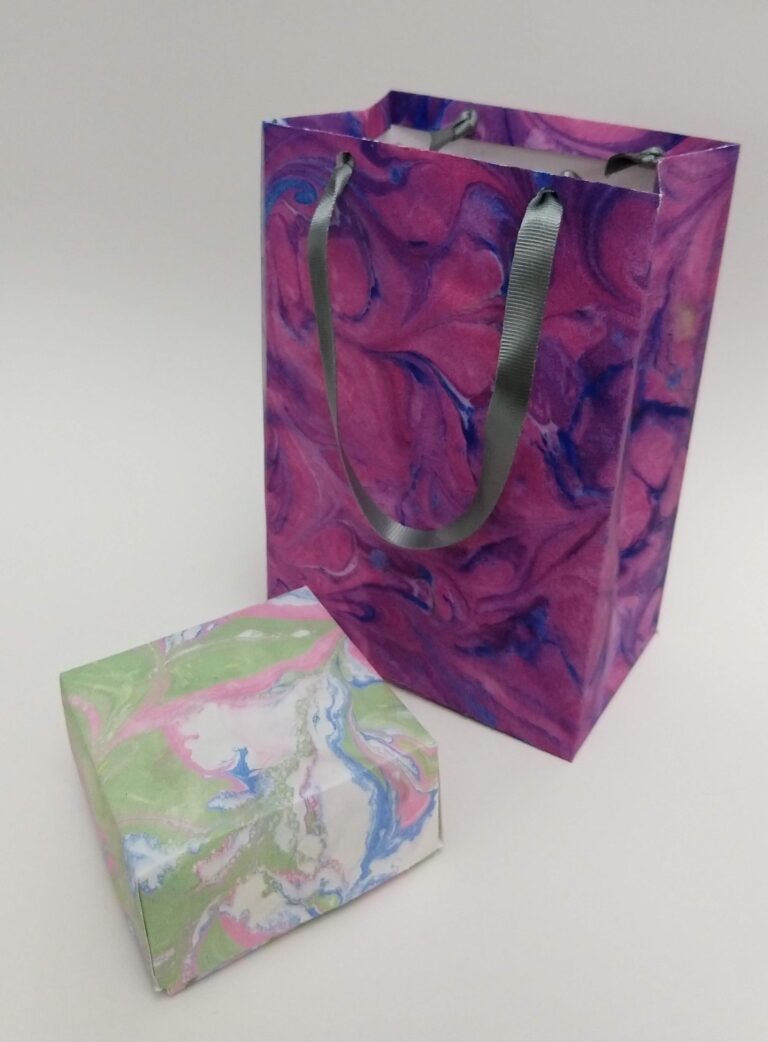
Grade Level
7-8, 9-10, 11-12Duration
3-4 class periods, 40 minutes in length
Materials
carrageenan (Amazon link), paper, a tray large enough to accommodate paper (Amazon link), jars or droppers to hold watered down paint, and acrylic paint, a blender if possible, and a large drying rack.
Media
Acrylic, Paper
Lesson Objectives
Students will be able to understand surface tension. Students will understand some history of marbling. Students will be able to create patterns by floating colors on top of water and applying it to paper to create an original print.
Introductory Activity
A handout or projection on the history of marbled paper and the role of surface tension. Student may be familiar with the concept from science class.
Lesson Process
I start with setting up a station for marbling in class. In advance I usually make up a couple of containers full by adding about two tablespoons of carrageenan to a blender full of warm water (leave a couple inches of space). Blend and pour into tote, about 3 inches deep, can vary. How long the baths last for can depend wildly on how enthusiastic and heavy handed the students are. I go through about 1-2 trays a period. My set up includes sheets of newspaper to catch the sheet newly marbled paper and a drying rack close by. You do not want the kids to walk with the paper as it drips and the solution on the floor is very very slippery. The paints are mixed up ahead of time, about 50% paint and 50% water, shake well. I have used baby food jars, eye droppers or small squeeze tubes.
Lightly distribute the paints onto the surface and watch as the paint distribute as a thin layer on top of the bath. At first it is hard to see. From there, take the back of the brush, a tooth pick, a comb, or otherwise improvised tool and swirl just the surface gently. Hold the paper in “U” and drop onto the surface. That allows it to roll pushing air out. If students just drop it on they will end up with air pockets.
Push edges of paper down and then grab a corner and lift. Listen to all the gasps. From there I settle students to their projects and call two students at a time to create their paper. I like to hand out the paper and have them write their name on it with a pen or fine type sharpie in the corner, small. Then they bring up the paper and marble it. It takes no less then two days for me to get through a class of about 20 students. When they are all dry I then have them make sketchbooks ((please find in link resources)) or, sometimes before winter break, I walk them through making a gift bag or origami box (please find in link resources).
Vocabulary
marbling, surface tensionResources
Marbling Paper and Fabric by Carol Taylor and Patty Schleicher
Marbling Paper YouTube video
How to Make a Simple Sketchbook
Origami Nesting Box
Author & Website/Blog
Maureen Meyer





